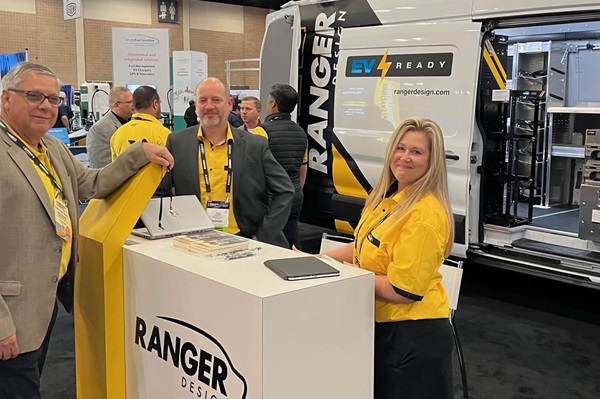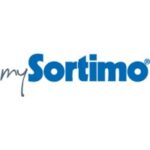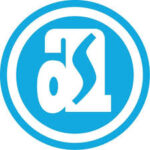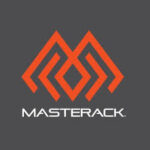
By Tod Trousdell, Fleet Marketing Consultant and Partner/RobertsTrousdell Communications
May 8, 2024
Last month’s NAFA I & E in San Antonio was a resurgent affair. And much like March’s record-setting Work Truck Week, the conference was a showcase for service providers focused on helping fleets make the transition to electric and other alternative fuel vehicles. None more so than for vehicle upfitters, who made a strong showing at both conferences. While Ranger Design and Adrian Steele each featured massive booths at Work Truck Week, they both showcased intriguing new storage products, many of which I had never seen before.
That got me to wondering. How do upfitters actually decide which products they’re going to develop each year? And, what goes into the design and manufacturing process that makes one upfitter different from another? Looking for a little clarity on the subject, as I walked the floor at this year’s NAFA I & E, I decided to ask four of the industry’s top providers how they develop products for customer upfits. Here’s what they had to say:
Sortimo: Backwards Compatibility Built-in
According to Erik Nelson, General Manager of North America for German upfitter Sortimo, there are two driving forces behind the way the company develops products, which are referred to by generations – the company is currently in the 5th generation of products.
 The first driving force, says Nelson, is that Sortimo’s leadership is “dedicated to constantly iterating and improving” the company’s product line, with anywhere from 20 to 25 new product enhancements a year, many at scheduled intervals. And secondly, that every product Sortimo produces is backward compatible. The process – which the company refers to as “retroactively compatible” – ensures that new products are always compatible with old products (but not always vice-versa). Sortimo is so dedicated to this process that customers can still integrate new products into its original toolbox, designed and released in 1973 and still available for sale.
The first driving force, says Nelson, is that Sortimo’s leadership is “dedicated to constantly iterating and improving” the company’s product line, with anywhere from 20 to 25 new product enhancements a year, many at scheduled intervals. And secondly, that every product Sortimo produces is backward compatible. The process – which the company refers to as “retroactively compatible” – ensures that new products are always compatible with old products (but not always vice-versa). Sortimo is so dedicated to this process that customers can still integrate new products into its original toolbox, designed and released in 1973 and still available for sale.
“We don’t sell a lot of them [the original toolboxes], but if you still have one, the products we’re developing today are still compatible with it,” said Nelson. “That says a lot about the value customers get from buying our products and solutions. They’re never going to spend a lot of money on something that they can only use for a year or two – they know that we’re going to grow with them.”
Ranger Design: Tailored Solutions from Outside-the-Box
At Ranger Design, product design is, perhaps, the most important function of the company, according to Peter Young, EVP of Business Development. So much so that its founders, a family of mobile tradesmen themselves, “included the word design in our name,” said Young. “It’s [product design] always been a major focus driven by our company’s customer-first approach, commitment to industry-leading quality, and legacy of superior engineering…” – which are all cornerstones of Ranger Design as it approaches its 40th year in business.
![]() But, according to Young, what really separates Ranger Design from its competition when it comes to product design is the company’s ability to custom develop products not just for a specific industry or vehicle – which it does – but for an individual client’s upfit based on its unique needs.
But, according to Young, what really separates Ranger Design from its competition when it comes to product design is the company’s ability to custom develop products not just for a specific industry or vehicle – which it does – but for an individual client’s upfit based on its unique needs.
“It’s all about looking at things differently,” said Young, who is also Chair of the Strategy Committee for the Automotive Fleet Leasing Association (AFLA). “So, while most providers will likely design a client’s upfit using the products it already has on the shelf, at Ranger Design, we can custom design a completely new and unique product for a single client. So, the question is, do you want your upfit designed with standard off the shelf products or completely unique products designed with out-of-the-box thinking?”
The reasoning for doing this is “simple,” according to Young. While there are many similarities between the way one type of industry – like cable operators – configures its work vehicles, “different companies have different needs, different vehicles and different ways of doing things.”
“Let’s say you’re a telecom provider,” he continued. “Do you want your upfitter to design your upfit with products they use for an entirely different industry, or worse, for your competition? Or do you want them to use products designed for your company’s specific upfit and the work environment you’re trying to create? In our opinion, that’s something that sets Ranger Design apart. Customers don’t have to wait for a new product release or next year’s upgrade, we simply custom design what they need for them and them alone.”
Adrian Steel: A Top-down, Bottom-up Approach
As arguably fleet’s largest and best-known North American provider, Adrian Steel has been developing new products for work vans for over 70 years. And despite the fact that the industry is making the transition to EV’s and alternate fuel work vehicles, the company is “always focused on finding new ways to help customers maximize space,” according to Katie Groves, National Fleet Sales Manager for Adrian.
 When it comes to product design and development, the company focuses on a two-pronged approach. According to Groves, that includes both a “top-down, bottom-up” approach to ensure that no stone goes unturned as it develops new products, something the company does on an ongoing basis. That also includes bringing in teams of cross-functional experts to help develop product in an effort to ensure “all the most important factors are being considered,” said Groves. And while products are being developed on an ongoing basis, the company will also create products for specific upfits if necessary.
When it comes to product design and development, the company focuses on a two-pronged approach. According to Groves, that includes both a “top-down, bottom-up” approach to ensure that no stone goes unturned as it develops new products, something the company does on an ongoing basis. That also includes bringing in teams of cross-functional experts to help develop product in an effort to ensure “all the most important factors are being considered,” said Groves. And while products are being developed on an ongoing basis, the company will also create products for specific upfits if necessary.
Masterack: Customer-driven Product Design
For the team at JP Poindexter-owned Masterack, determining which products to produce “revolves around the customer,” according to Wayne Steele, VP of Engineering. That includes working closely with existing customers that focuses on “improving the productivity of their drivers and field technicians.” And while there is no regular schedule or agenda for when a product gets developed, Steele said  product development was a focused part of Masterack’s sales strategy that involved “comprehensive discovery sessions and, in some cases, ride-alongs” that work to identify ways to optimize unused space or add organization for job specific items – an exercise Steele said was particularly beneficial to customers.
product development was a focused part of Masterack’s sales strategy that involved “comprehensive discovery sessions and, in some cases, ride-alongs” that work to identify ways to optimize unused space or add organization for job specific items – an exercise Steele said was particularly beneficial to customers.
“We know that for our customers the efficiency of their vehicles and crews directly impacts the bottom line,” said Steele. “That’s really the driving force for how we design products.”
Myriad Options, Quality Products
My impression of the storage products and upfit solutions I saw at NAFA and also at this year’s Work Truck Week in March, were that upfitters had an even more comprehensive array of products and solutions than I imagined.
Despite facing stiff headwinds from challenges like carbon reduction and EV adoption, today’s fleets have myriad options for how they select – or develop – products for their unique needs. Whether that means custom products developed specifically for their upfit by providers like Ranger Design, or a customer-driven product offering from Masterack, there’s no shortage of great options – or providers – from which to choose.
Happy upfitting!
About the Author
 Tod Trousdell is a marketing consultant and owner of RobertsTrousdell Marketing in Atlanta. In addition to working extensively in fleet, Tod has worked for over 30 years in the cable, sports and hospitality industries, specializing in marketing and brand strategy, research, campaign development, messaging and more for companies like Coca Cola, the International Olympic Committee and Wyndham Hotels. He can be reached at [email protected].
Tod Trousdell is a marketing consultant and owner of RobertsTrousdell Marketing in Atlanta. In addition to working extensively in fleet, Tod has worked for over 30 years in the cable, sports and hospitality industries, specializing in marketing and brand strategy, research, campaign development, messaging and more for companies like Coca Cola, the International Olympic Committee and Wyndham Hotels. He can be reached at [email protected].



